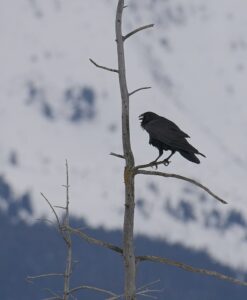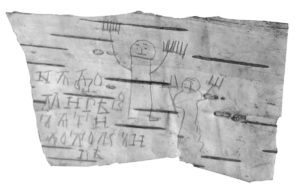We’ve had the least desirable type of weather in my neck of the woods today: rain, freezing rain, snow, and more rain. It brings with it chill-to-the-bones cold that is miserable and dangerous.

Fortunately, I’ve been snug at home all day, with no plans to venture out. I’ve been watching a Raven sitting at the top of a bare tree at the top of a hill. Every time I’ve looked out the window, over several hours, she’s remained glued to that branch. I’m impressed with how active Ravens are during cold damp weather, when no other birds would venture out. I still see Ravens flying the road on my way to work, when the temp is barely keeping the rain from changing to snow.
I certainly can’t stay outside very long in this weather. A cold rain is much worse than snow for inducing hypothermia. In my last book, Divining with Animal Guides, I didn’t discuss the adaptation of Ravens for harsh weather, but they are the survivors of the bird world. No wonder they’re so long-lived: why endure the hard times unless you’re waiting for halcyon days to return again? And winter is hard for these birds; juveniles often do not survive their first winter.
I’ve been like the Raven, enduring seasons of cold and deprivation, waiting for the return. Today I listened to a webinar on marketing and publicity, which had a few gems inside the cold realities. It’s easy to focus on the harshness of the particular climate in which I’m promoting my work rather than the strengths. I will be exploring how to make the innovative, idiosyncratic, and controversial aspects of my writing and my character a selling point rather than a drawback.
The Raven had a reason for perching on such an exposed inclement branch, which could not have been comfortable, even for her. Likewise, there is an intelligent reason why I find myself here, at this juncture, at this point in my life. I just need to figure out what it is.

